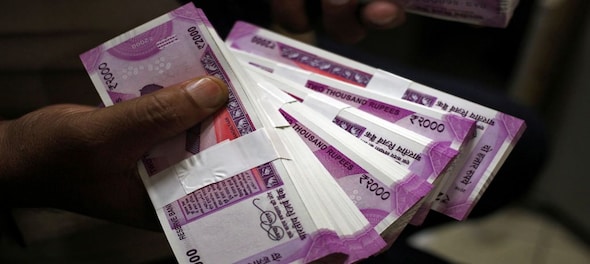
On November 8, 2016, millions of Indians heard the Prime Minister announce that currency notes of Rs 500 and Rs 1,000 denominations would be banned. PM Modi announced that the move -- which banned 86 percent of the currency in circulation -- was meant to combat the piles of black money that Indians had amassed and start the country's transition towards a “cashless economy.”
“Which honest citizen would not be pained by reports of crores worth of currency notes stashed under the beds of government officers? Or by reports of cash found in gunny bags,” PM Modi had announced at the time.
Here’s all that has happened after five years of demonetisation
Demonetised currency came back
The demonetisation programme had the wide-reaching ambitious goals of purging unaccounted cash in the Indian economy. In order to achieve that goal, the government had decided to ban currency notes of higher denomination along with other measures. The amount of currency that was with the public at the time stood at Rs 17.97 trillion, of which Rs 15.41 trillion was demonetised.
But as money was deposited under declarations and various bank accounts, virtually the entirety of the demonetised currency wound up making its way back to the banking system. According to data from the RBI, Rs 15.31 trillion of the demonetised currency or 99 percent of the demonetised notes were back in the economy.
Reports of using poor individuals as mules by using their bank accounts, charges of graft on part of bank employees and large-scale allegations of collusion. In all, the estimates presume that only 1 percent of the entire public’s cash value was purged.
A cashless society
As data emerged over the lack of efficacy and success in purging black money from the system, the government then announced that the demonetisation programme was undertaken with the goal of becoming a “cashless” society, which was further amended to being a “less cash” society.
“The magnitude of cash in circulation is directly linked to the level of corruption. Inflation becomes worse through the deployment of cash earned in corrupt ways. The poor have to bear the brunt of this. It has a direct effect on the purchasing power of the poor and the middle class,” PM Modi had stated.
But while the quantum of cashless transactions made through payment portals, and UPI-linked systems has increased considerably, India is nowhere close to becoming cashless. Transactions made through UPI had crossed 4.2 billion compared to 0.29 million in November 2016. But at the same time, cash still continues to be king.
Cash in circulation has increased from 8.7 percent of GDP in FY17 to 14.7 of GDP in FY21, reaching an all-time high of Rs 28.3 trillion just last month. The volume of higher currency notes, often blamed for enabling black money stashes, has also increased massively. High denomination notes, Rs 500 and Rs 2,000, make up 33 percent of the volume of cash in FY21, compared to just making up 9.2 percent in FY17.
Impact on economy and informal sector
The informal sector of the country makes up the livelihoods of a large proportion of the population. Daily wage workers, labourers, farmers, and many others relied on cash at the time of demonetisation. As a result of the move, the informal sector went from having a share of around 50 percent of the Indian economy to just 20 percent of the GDP, according to National Statistical Commission.
It is hard to estimate the true economic impact of this contraction, with economists and experts also debating about the extent and reality of the impact. But following the demonetisation programme, the Indian economy has been on a steady decline since FY18, with the pandemic year witnessing the highest ever GDP contraction of 7.3% in 2020-21.
(Edited by : Shoma Bhattacharjee)
First Published: Nov 8, 2021 7:31 PM IST
Check out our in-depth Market Coverage, Business News & get real-time Stock Market Updates on CNBC-TV18. Also, Watch our channels CNBC-TV18, CNBC Awaaz and CNBC Bajar Live on-the-go!


Andhra Pradesh Lok Sabha elections: A look at YSRCP candidates
Apr 25, 2024 6:54 PM
Lok Sabha elections 2024: Banks and schools to remain closed in these cities for phase 2 voting
Apr 25, 2024 5:33 PM
Andhra Pradesh Lok Sabha elections: Seats, schedule, NDA candidates and more
Apr 25, 2024 5:16 PM

